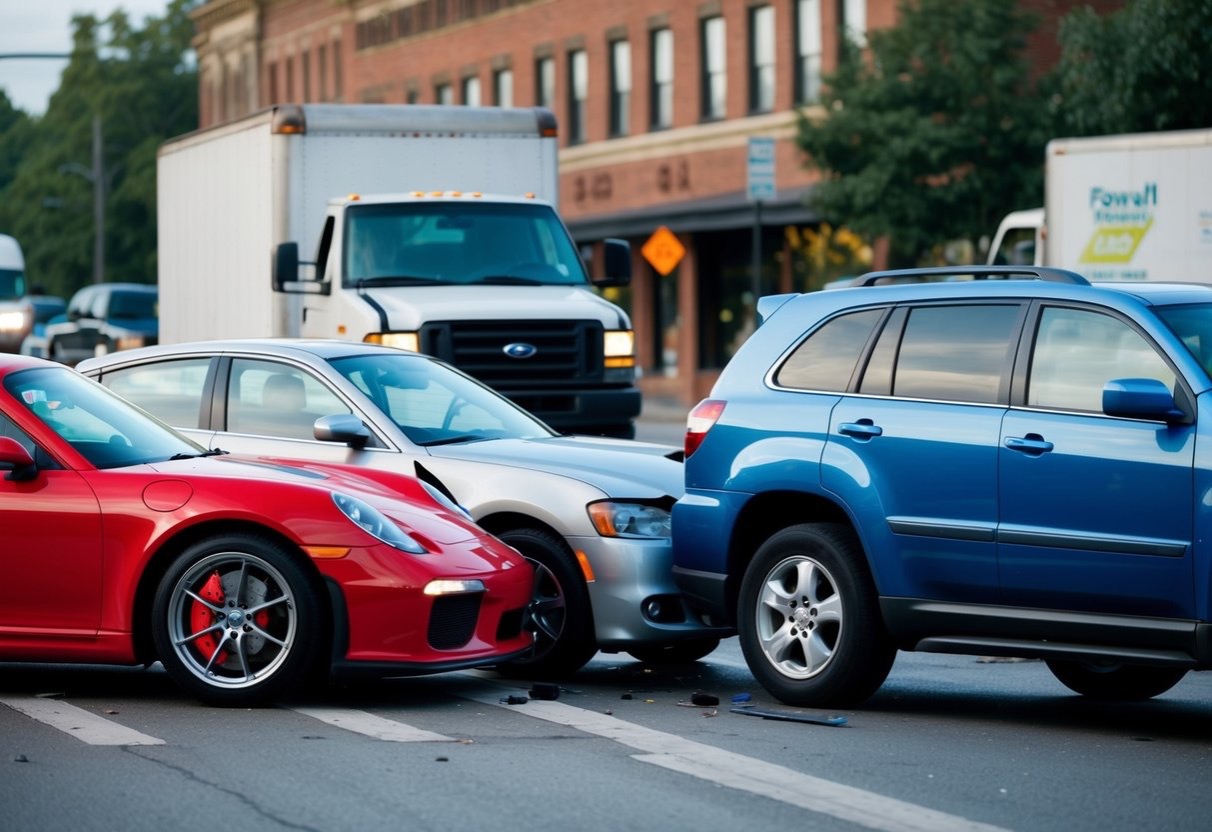Understanding which car brands are more prone to accidents can guide safer purchasing decisions. The Chevrolet Silverado has been noted as the vehicle most likely to get into an accident, with 8,777 fatal road accidents reported between 2016 and 2020. This statistic highlights the potential risks associated with selecting such a popular vehicle.
The underlying factors contributing to high accident rates include speeding, driving under the influence, and distracted driving. These elements, among others, play a significant role in the frequency of accidents involving particular car models. Readers interested in learning more about these patterns can explore additional data indicating that brands like Tesla and Ram also have elevated accident rates.
Brands associated with higher accident rates may be popular among drivers with riskier driving habits. This provides an essential consideration for those looking to understand vehicle safety profiles better. With attractive features and technologies often at the forefront of their appeal, it’s crucial to also weigh the safety implications.
Contents
Statistics on Car Accidents
Car accidents are prevalent and affect a wide range of demographics, types of vehicles, and geographical locations. Understanding these factors helps in forming preventive measures and legal assistance from a car accident lawyer. The following sections delve into detailed statistics.
Demographics of Affected Drivers
Drivers of various age and experience levels are involved in car accidents. Young drivers, particularly those aged 16 to 24, are more frequently involved in crashes due to inexperience and risk-taking behaviors. Senior drivers also face risks due to declining vision or slower reaction times.
Gender also plays a role, with males statistically involved in more severe accidents due to engaging in high-speed driving and other riskier behaviors. Awareness and behavioral shifts among specific groups can significantly reduce accident rates.
Most Common Vehicle Models Involved
Certain car models are frequently involved in accidents. The Chevrolet Silverado tops the list, being part of 8,777 fatal accidents between 2016 and 2020. The Ford F-150 follows closely, which is also a popular vehicle choice.
Models like Tesla, Ram, and Subaru have high accident rates, with over 20 accidents per 1,000 drivers. This information may aid consumers in making safer vehicle choices. It’s important to choose models with robust safety ratings and features to mitigate risk.
Locations Prone to High Accident Rates
Accident rates vary significantly by location, with urban areas typically showing higher rates due to traffic congestion and more complex driving environments. Highways and intersections are common sites for accidents due to higher speeds and merging traffic.
Certain states exhibit higher crash statistics; policy and infrastructure improvements could help reduce these numbers. Local traffic enforcement and highway safety measures are crucial for reducing the frequency and severity of accidents in these areas. Implementing effective road safety measures is essential for lowering accident rates in vulnerable locations.
Factors Contributing to Accidents
Factors such as human behavior, vehicle design issues, and environmental conditions significantly impact accident rates. Each element plays a role in the likelihood and severity of road incidents, affecting both drivers and pedestrians. Understanding these factors can inform safer practices and more responsible driving habits.
Behavioral Aspects
Driver behavior remains a leading cause of accidents. Distraction from mobile devices, eating, or other in-car activities elevates risk significantly. Driving under the influence of drugs or alcohol also remains a critical factor, contributing to a notable percentage of serious crashes. According to a report from The Zebra, impaired driving results in thousands of fatalities every year in the United States. Speeding and aggressive driving styles, such as tailgating and frequent lane changes, further increase accident likelihood.
Compliance with traffic regulations and awareness of one’s surroundings are vital. Defensive driving courses and public awareness campaigns aim to reduce these behaviors. Consulting a car accident lawyer can help navigate the legal consequences of such actions, particularly in incidents involving severe personal and property damages.
Vehicle Design and Defects
The design and safety features of a vehicle play critical roles in both accident prevention and occupant protection. Vehicles lacking modern safety technologies, like automatic braking or lane departure warnings, are at a higher risk for accidents. Structural defects, such as faulty brakes or airbags, can exacerbate crash severity. Regular maintenance checks and updates to vehicle systems are essential preventive measures.
Recalls and safety investigations address known defects, emphasizing the importance of car manufacturers adhering to high safety standards. For affected individuals, consulting with a car accident lawyer can assist in pursuing claims related to manufacturer negligence. The National Highway Traffic Safety Administration routinely publishes reports facilitating consumer awareness on these issues.
Road Conditions and Weather Influences
Adverse weather conditions, including rain and fog, greatly increase accident risks. Slick roads reduce tire traction, making hydroplaning a concern. According to The Zebra, weather-related crashes claim more lives annually than large-scale weather events. Poorly maintained roads with potholes or unclear signage worsen the driving experience, leading to more frequent accidents.
Urban development can strain road networks, requiring robust infrastructure planning and timely maintenance. When accidents occur due to environmental conditions, a car accident lawyer can assist in assessing potential liability and claims. Understanding the influence of weather and road conditions can guide drivers in making safer travel decisions, such as adjusting speed and using proper lighting during adverse weather.
Impact of Accidents
Car accidents have significant repercussions that extend beyond the initial collision. These effects can manifest in both the physical and emotional well-being of those involved, as well as their financial stability.
Physical and Emotional Cost
The aftermath of a car accident often involves injuries ranging from minor bruises to more severe conditions such as broken bones or head trauma. These physical injuries can have long-lasting impacts, requiring ongoing medical treatment and rehabilitation. Emotional trauma is another critical aspect, with many experiencing anxiety, depression, or PTSD following an accident.
Dealing with these issues often necessitates psychological support and therapy. The process of recovery can be lengthy and challenging. The support of medical professionals and possibly a car accident lawyer can aid in navigating these complexities.
Financial Implications
Financially, car accidents can be profoundly impactful. Victims may face medical bills, vehicle repair costs, and potential loss of income due to injury-related incapacity. Insurance often covers some expenses, but gaps can leave individuals struggling financially.
Legal fees can add to the burden if there is a need for a car accident lawyer to handle claims and settlements. Therefore, understanding insurance policies and seeking professional advice are crucial steps in mitigating these financial strains. Addressing these hurdles requires careful planning and expert assistance to ensure recovery without significant monetary loss.




